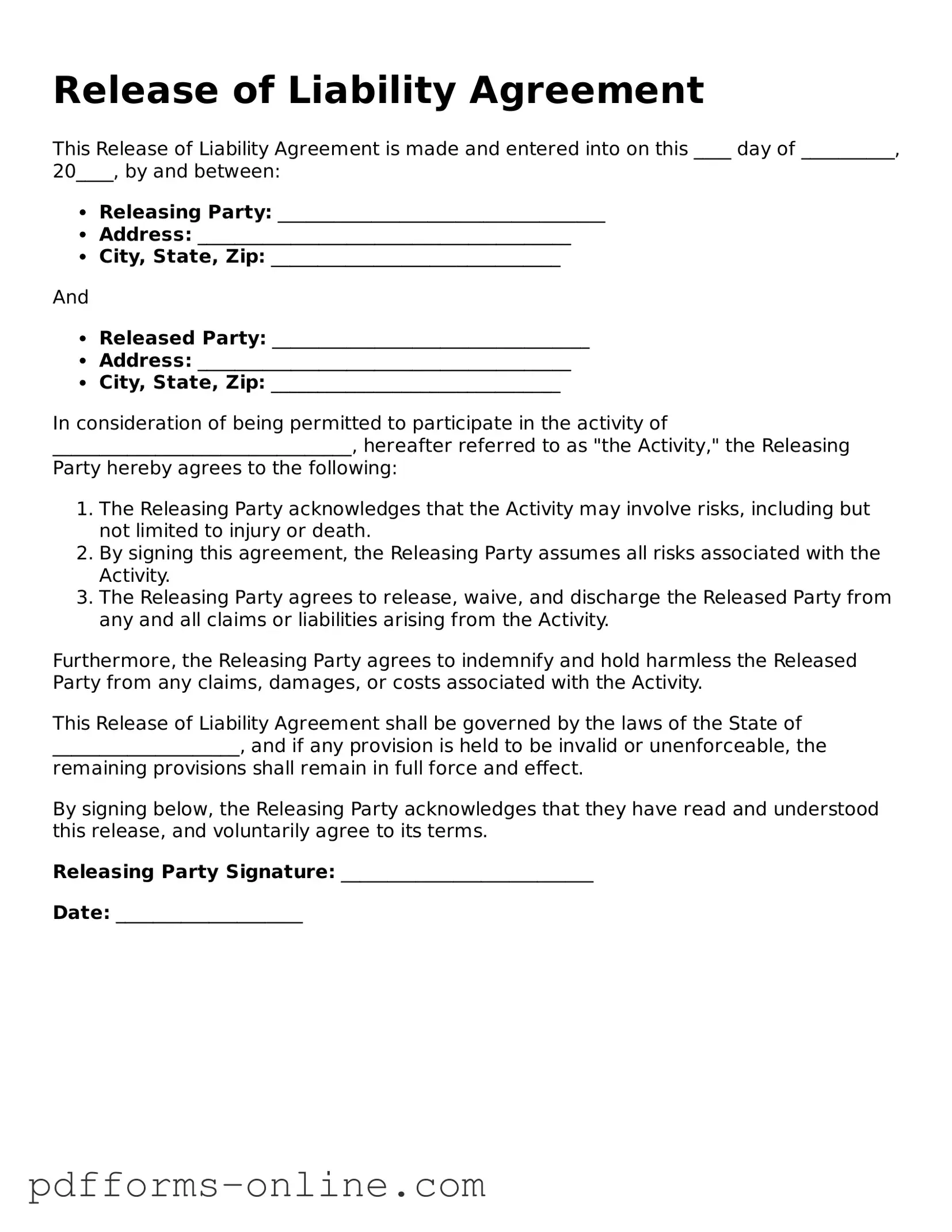Release of Liability Agreement
This Release of Liability Agreement is made and entered into on this ____ day of __________, 20____, by and between:
- Releasing Party: ___________________________________
- Address: ________________________________________
- City, State, Zip: _______________________________
And
- Released Party: __________________________________
- Address: ________________________________________
- City, State, Zip: _______________________________
In consideration of being permitted to participate in the activity of ________________________________, hereafter referred to as "the Activity," the Releasing Party hereby agrees to the following:
- The Releasing Party acknowledges that the Activity may involve risks, including but not limited to injury or death.
- By signing this agreement, the Releasing Party assumes all risks associated with the Activity.
- The Releasing Party agrees to release, waive, and discharge the Released Party from any and all claims or liabilities arising from the Activity.
Furthermore, the Releasing Party agrees to indemnify and hold harmless the Released Party from any claims, damages, or costs associated with the Activity.
This Release of Liability Agreement shall be governed by the laws of the State of ____________________, and if any provision is held to be invalid or unenforceable, the remaining provisions shall remain in full force and effect.
By signing below, the Releasing Party acknowledges that they have read and understood this release, and voluntarily agree to its terms.
Releasing Party Signature: ___________________________
Date: ____________________
